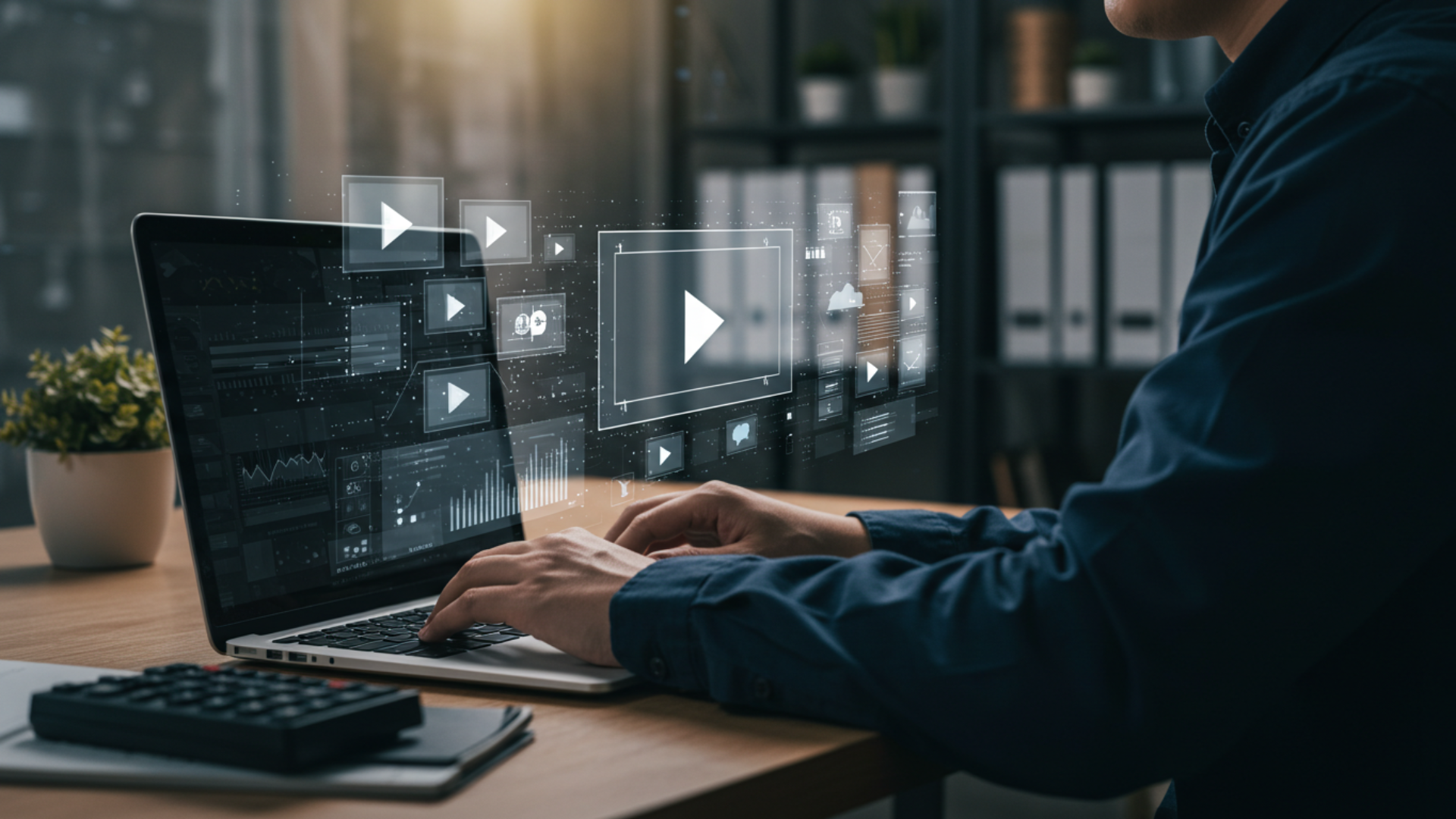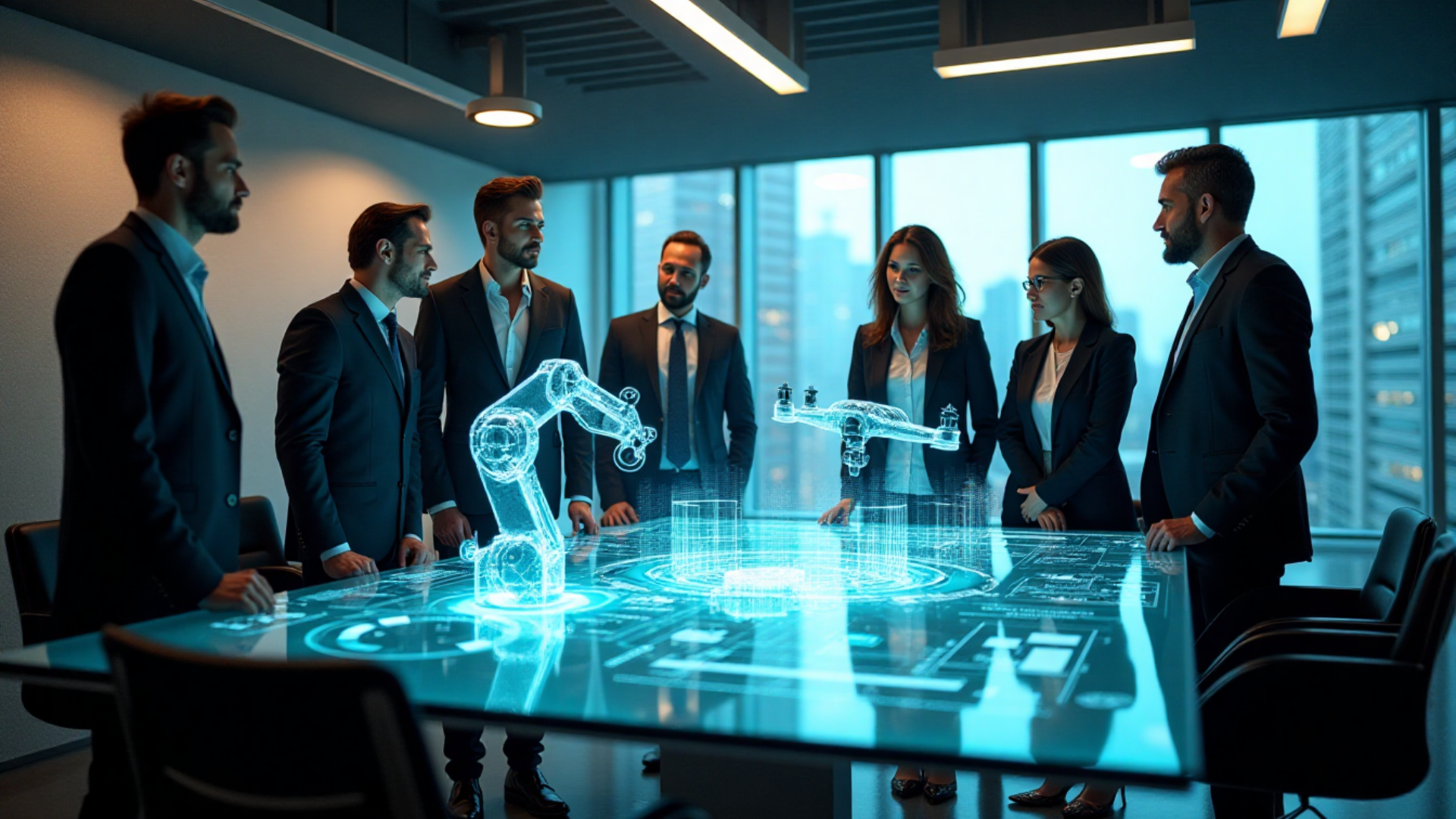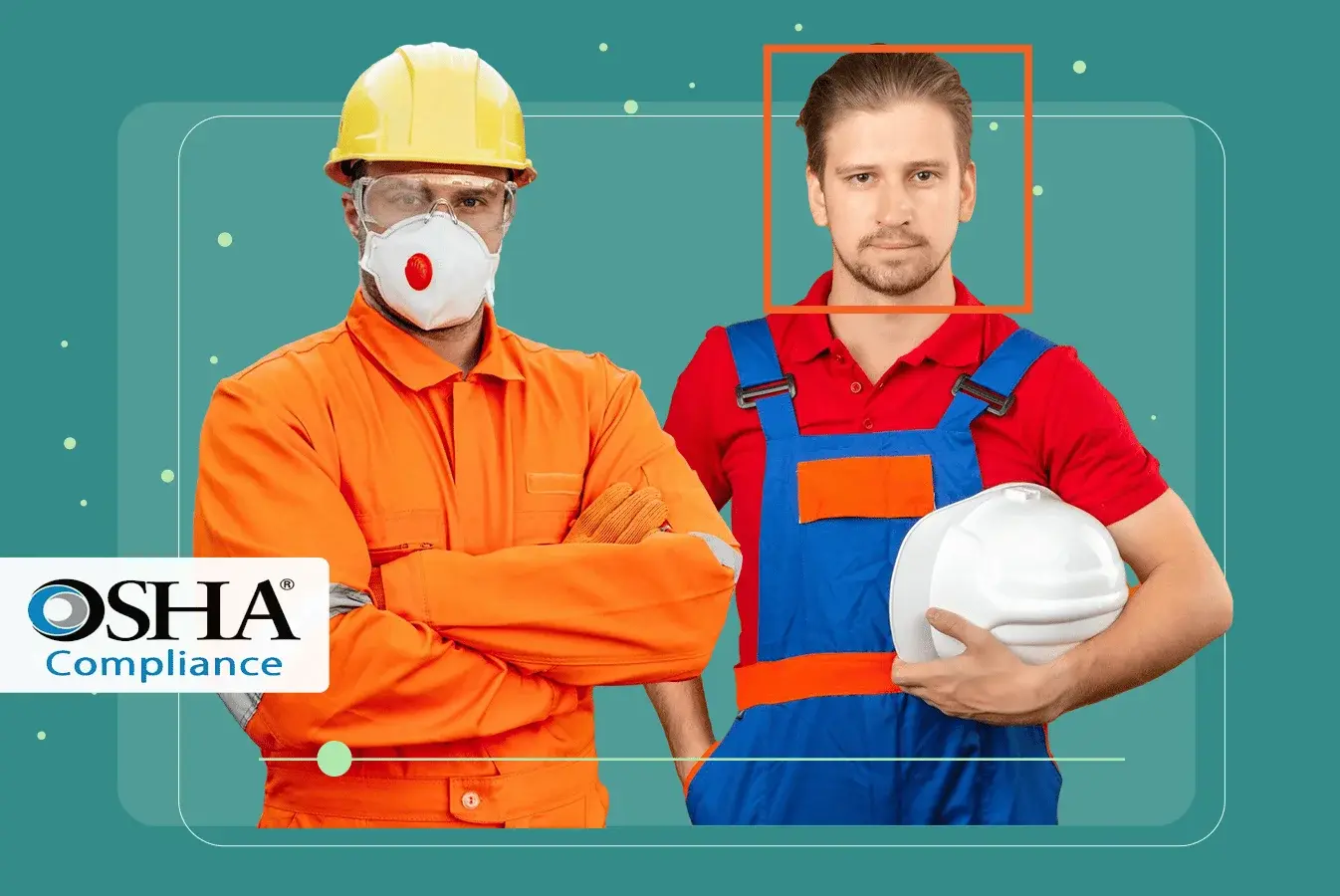Computer Vision Development Services: Giving Machine Eyes
by Shahzaib Shafqat, Last updated: April 14, 2025, Code:

Defective products slipping through production can cost millions, while theft and poor service hurt retail stores. Defective products can lead to significant financial repercussions; for instance, in 2023, U.S. businesses incurred fines totaling $55.3 million due to product defects.
What if a smart system could prevent these issues by monitoring and analyzing visual data in real time? This is where computer vision development services come in.
By empowering machines to "see" and understand images and videos, they help organizations solve problems faster, better, and more accurately. Let’s explore how this technology is transforming industries—and how it could transform your business, too.
Why Businesses Need Computer Vision Services
Businesses operate in a fast-paced, data-driven world flooded with visual information—from product images and security footage to customer behavior insights and operational workflows. This explosion of unstructured data creates both opportunities and challenges.
The opportunity lies in extracting actionable insights that drive innovation, efficiency, and competitive advantage. The challenge is that most organizations lack the tools or capacity to process and analyze this data effectively. Overall, what does this inefficiency lead to?
1. Inefficiencies in Manual Processes
Manual processes for analyzing visual data are slow and prone to human error. Consider a manufacturing plant that relies on human inspectors to identify product defects. No matter their skill level, people will miss inconsistencies when inspecting thousands of items daily.
2. Data Overload
The volume of visual data generated by businesses is staggering. Surveillance systems, drone footage, and inventory scans generate terabytes of information daily. Sifting through this data manually is not just time-consuming—it’s virtually impossible. Valuable insights get lost, making informed decisions harder for businesses.
3. Operational Blind Spots
Visual data is critical to operations, but many businesses operate with metaphorical blinders. Blind spots occur when companies fail to detect anomalies, track trends, or anticipate issues due to a lack of automation. Moreover, organizations that fail to adopt advanced technologies like computer vision risk falling behind competitors who do.
How Computer Vision Development Services Transform Industries
Computer vision development services are transforming industries by enabling businesses to process and analyze visual data at an unprecedented scale. Let's see how this smart technology is changing different industries.
Manufacturing: Boosting Efficiency and Quality
In manufacturing, where precision and efficiency are paramount, computer vision is making a profound impact. One key application is inventory management, where AI-powered systems scan aisles and monitor stock levels. This eliminates the risk of understocking or overstocking.
Another transformative use case is predictive maintenance, where AI computer vision development services analyze equipment for signs of wear and tear. By identifying potential failures before they occur, businesses can prevent costly downtime, reduce repair expenses, and extend the lifespan of machinery.
The most critical application lies in defect detection. Computer vision services inspect products with unparalleled accuracy, identifying cracks, missing components, or other flaws that human inspectors might miss. This guarantees quality products, lowering recall risks and boosting brand reputation.
Construction: Ensuring Safety and Security
A standout feature of computer vision in this sector is PPE detection, which ensures compliance with safety regulations like those set by the Occupational Safety and Health Administration (OSHA). For a detailed look at OSHA's PPE requirements, refer to their official guidelines here.
Structural integrity is another critical concern; computer vision addresses this through crack detection. AI systems scan buildings for even the most minor cracks or defects in concrete structures, helping prevent long-term damage and costly repairs. These systems contribute to the longevity and safety of buildings.
Construction sites are also vulnerable to theft and trespassing, and site security powered by computer vision offers an effective solution. AI systems analyze live feeds to detect unauthorized access or suspicious activities, enabling swift action to protect equipment and materials.
Retail: Enhancing Customer Experience and Reducing Losses
In retail, computer vision revolutionizes operations by addressing critical challenges like theft prevention and customer experience. With AI-driven surveillance systems, retailers can monitor activity and detect suspicious behaviors such as shoplifting or unauthorized access to restricted areas.
Computer vision also plays a significant role in consumer behavior analysis, enabling retailers to gain insights into customer preferences and shopping patterns. By tracking foot traffic and dwell times, businesses can tailor their marketing strategies and optimize product placement to boost sales and enhance the shopping experience.
Additionally, store layout optimization benefits greatly from computer vision. AI systems analyze how customers move through the store, identifying high-traffic areas and underutilized spaces. This data allows retailers to position products and promotional displays strategically.
Prosecution: Streamlining Case Management
The legal industry uses computer vision to improve efficiency and maintain privacy in sensitive cases. One of its most impactful uses is in case prioritization, where AI analyzes data to determine the urgency of a case. This ensures that critical matters receive attention promptly.
Another valuable application is case assignment, where AI evaluates a case's complexity and matches it to the appropriate legal professional. By assigning cases based on expertise, computer vision improves outcomes and optimizes resource allocation within legal teams.
Redaction is another crucial use case, especially when protecting sensitive information. AI systems automatically blur faces, license plates, and other private details in video depositions or legal documents, ensuring compliance with privacy laws while saving countless hours of manual effort.
Defense: Enhancing National Security
Computer vision is a game-changer in defense, where timely intelligence and proactive measures are critical. One of its most significant applications is aerial intelligence, with AI analyzing drone footage to detect unauthorized activities or objects in restricted areas. This enables rapid response to threats, safeguarding national borders and critical infrastructure.
Another crucial application is trespasser detection, where custom computer vision development services, with the help of AI, monitor live video feeds to identify individuals attempting to access prohibited zones. Computer vision detects and prevents security breaches, whether a military site or critical infrastructure before they escalate.
Finally, identifying a POI (Person of Interest) takes security to the next level. AI systems equipped with facial recognition can identify and track individuals flagged as potential threats, such as terrorists or criminals. This proactive approach enhances national security by preventing incidents before they occur.
Why Custom Computer Vision Solutions Are Essential
While off-the-shelf computer vision tools can address basic needs, they often fail to solve complex, industry-specific challenges. These generic solutions are designed for broad applications, offer limited flexibility, and usually require businesses to adapt their workflows to fit the tool.
In contrast, custom computer vision development services provide tailored solutions that meet the unique demands of your operations, delivering unparalleled accuracy, relevance, and scalability.
Custom solutions excel because they are trained on data specific to your business. For instance, a manufacturer may need a defect detection system that recognizes cracks within a particular type of material, or a retailer might want a Gen AI that identifies subtle customer behaviors unique to their store layout.
Using industry-specific datasets, custom solutions are better equipped to deliver precise results, minimize errors, and ensure a higher return on investment. Moreover, custom solutions can integrate seamlessly into existing systems, whether ERP, CRM, or proprietary software.
They are designed to adapt to your business’s growth, handling increasing volumes of data and evolving with your needs. Ultimately, a tailored approach ensures that your business doesn’t just adopt technology—it leverages it to solve real-world problems and gain a competitive edge.
How to Get Started with Computer Vision Development Services
Implementing computer vision solutions may seem daunting, but a structured approach ensures a smooth transition and successful outcomes. Here’s how to get started:
1. Identify the Problem You Want to Solve
The first step is to define your specific challenges and objectives. Are you looking to improve product quality through defect detection, enhance security with surveillance, or optimize customer experiences with behavior analysis?
Clearly outlining your goals ensures that the computer vision solution is aligned with your business priorities. For example, a construction company may need a system to detect worksite PPE violations, while a retailer might focus on reducing shoplifting.
2. Gather and Prepare Quality Data
Data is the backbone of any successful computer vision system. Collect high-quality images or video footage relevant to your use case. For instance, a manufacturing company might compile datasets of both flawless and defective products.
Data preparation often involves annotation, where experts label key features in the dataset to train the AI—the more accurate and comprehensive your data, the better the AI model’s performance.
3. Partner with Experts in Custom Computer Vision Development
Implementing computer vision requires expertise in AI, machine learning, and industry-specific challenges. Partnering with a reputable provider ensures that your solution is built by professionals who understand your business needs and can deliver a system tailored to your operations.
Look for a provider with a proven track record of delivering custom solutions and the ability to integrate their technology seamlessly into your existing workflows. Strong communication and collaboration with the development team are essential for achieving the desired results.
4. Develop, Test, and Integrate
Once the solution is in development, it undergoes rigorous testing to ensure accuracy and reliability. Testing often involves running the model on real-world data to refine its performance. Once validated, the system is integrated into your existing processes, ensuring minimal disruption to your operations.
For example, a defect detection system in manufacturing could be integrated with assembly line cameras and quality control databases, and a theft prevention system could connect with surveillance networks and incident reporting tools in retail.
5. Monitor, Optimize, and Scale
AI systems require ongoing monitoring and refinement to maintain performance and adapt to new challenges. As your business grows and evolves, your computer vision solution can scale alongside it. Regular updates and retraining ensure the system meets your needs and stays ahead of emerging trends.
Transforming Industries with Computer Vision Services
Computer vision development services are more than a technological trend—they’re necessary for businesses that want to thrive in an increasingly data-driven world. From manufacturing and construction to retail, prosecution, and defense, the transformative potential of computer vision is clear.
This technology is helping industries operate more intelligently, faster, and more efficiently by automating processes, improving safety, and delivering actionable insights. The future is here, and computer vision is leading the way.
People Also Ask
What is computer vision, and how does it work?
Computer vision development services use AI to analyze visual data (like images and videos) and derive actionable insights.
What industries can benefit from computer vision development services?
Manufacturing, retail, healthcare, defense, construction, and more can leverage this technology.
What’s the difference between off-the-shelf and custom computer vision solutions?
Off-the-shelf solutions offer general capabilities, while custom solutions are tailored to your needs.
How accurate are computer vision models?
With quality data and regular updates, models can achieve near-perfect accuracy.
Can computer vision help with compliance?
Yes, it can detect PPE violations, redact sensitive information, and ensure adherence to safety standards.
Is implementing computer vision expensive?
While there’s an upfront cost, the long-term ROI from efficiency gains often outweighs the investment.
How does computer vision handle sensitive data?
Advanced security protocols ensure data privacy and compliance with regulations.
How long does it take to deploy a custom solution?
Development timelines vary but generally range from a few months to a year, depending on complexity.
Jump to
You May Also Like
These Related Stories

10 Ways How Computer Vision Services Are Shaping Modern Enterprises

How PPE Detection Helps in OSHA Compliance


No Comments Yet
Let us know what you think